The mystery of the dying flock: Signs of avian flu and cocci
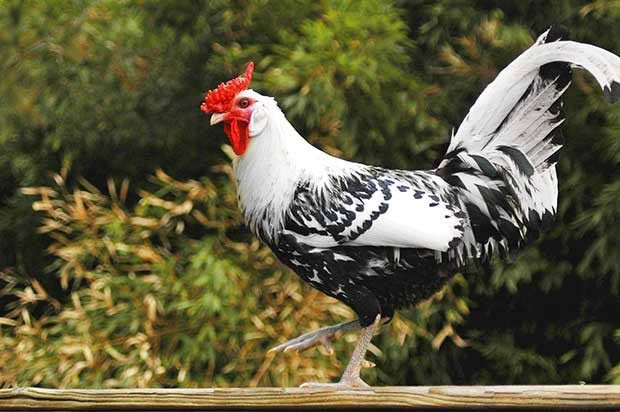
When chickens die, the backyard flock owner usually has to make a guess as to why, but this unusual case meant they found the right answer.
Words: Sue Clarke
I’ve been working with poultry, personally and professionally, for 50+ years, but I still find new cases invaluable.
In this case, a very worried poultry rang me. Her young spangled Hamburg flock was dying – five in just one week. Her husband thought they might have picked up salmonella from their ducks as they were all running together.
The flock in question was hatched by her from fertile eggs. She had raised 20 chicks to 12 weeks old, and had recently moved them off Chick Starter feed.
They were now eating with the older birds, a mix of several varieties including up to 80 Hyline laying hens (in a separate run) and some older light Sussex.
One of the misconceptions for many backyard free-range flock owners is they think their birds won’t get diseases like commercial flocks do, and that their birds only get worms or mites.
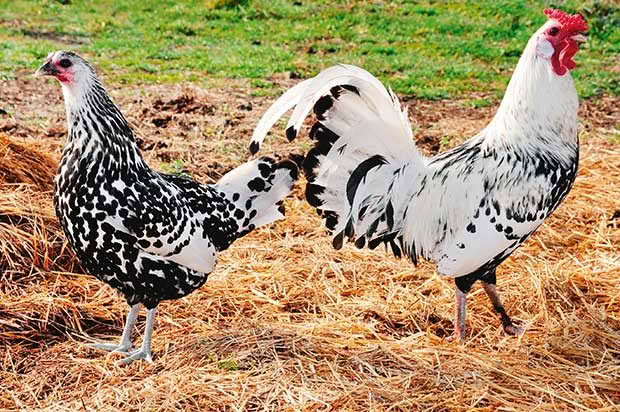
Spangled Hamburgs, similar to the ones that got sick.
But it’s far worse for a backyard flock. When birds in a commercial flock get sick, a specialist health officer and then an avian vet will be brought in quickly. Options will be assessed, tests will be carried out to confirm the cause, and medication will be prescribed.
When a bird in a small flock gets sick, it almost never gets this kind of careful diagnostic assessment.
An owner or a more experienced poultry person (like me) or more rarely a vet may make an educated guess as to the cause, but usually, the bird doesn’t see a professional or get treatment because it’s not economic, and/or the owner chooses to try and manage it on their own.
I didn’t get to see these birds to assess their condition, but sudden deaths in young birds that have recently come off medicated feed meant the immediate suspect was coccidiosis.
I advised isolation (to prevent spreading the illness to other birds), warmth, a return to the high protein, coccidiosis-medicated Chick Starter feed they had been on, and treatment with Coxiprol, a no-prescription-required treatment for coccidiosis, which she had on hand.
A couple of days later she rang to say they had started coughing and sneezing and another four or five looked sick. Those aren’t symptoms of coccidiosis.
Infected birds are very prone to secondary infections. My thoughts turned to possible respiratory diseases. I suggested she consider getting a vet prescription for an antibiotic to alleviate it. She would need to take a few sick birds along to the vet and a dead one, if any more died before she got there.
The vet took throat swabs and sent them off to Massey Vet Lab. He prescribed tetracycline (a broad spectrum antibiotic) in the meantime.
Interestingly, because a respiratory disease was involved and 50% of my friend’s affected group were dead or sick, the Ministry for Primary Industries (MPI) had to be notified in case it was something like avian influenza, a notifiable disease that is not present in NZ.
That meant the testing – the most expensive part of the process – was free. If a post-mortem was required, she’d have got the best avian experts in the country doing that for free too.
Fortunately, her birds were negative for avian influenza, but the tests did indicate infectious laryngo tracheitis (ILT).
The owner, her vet, a vaccine manufacturer and I were all involved in coming up with a plan of action.
Commercial flocks are often vaccinated for this disease, which is more common in northern parts of NZ. The problem for a small flock owner is once the live virus vaccine is introduced, every subsequent flock must be vaccinated and it’s expensive: $50-$60 per 1000 dose bottle. The vaccine must be carefully stored and only lasts a very short time, necessitating buying more for every batch of chicks you hatch or new birds you introduce.
In the meantime, after treatment with antibiotics, there were no further deaths and the remaining birds were only showing signs of the occasional sneeze.
The decision was made not to carry out blood tests on the rest of the flock or to administer a vaccine (at an estimated cost of $400) as suggested by the vet. However, if their condition deteriorated again, she would isolate and maybe kill the entire spangled Hamburg flock (10 remaining birds) to protect the 80 laying hens.
Chances are the other birds in her flock had already come into contact with the disease and become immune. In the meantime, strict quarantine and a clean-out of the young birds’ housing was advised.
Where the disease came from is a mystery. Most likely, it was already in the environment and the young birds and their immature immune systems were then exposed to it. ILT is not egg-transmitted, so it’s possible it came in via wild birds carrying infected nesting materials from another flock, or it was accidentally transported in on the shoes or clothes of a visitor with infected birds at home.
Luckily it was properly diagnosed. If that testing hadn’t taken place, we would never have known the cause.
It’s a lesson to never take unexplained deaths for granted, especially when it involves more than 2-3 birds. Acting quickly, through a vet if possible, could perhaps avert an exotic disease outbreak too.
AVIAN INFLUENZA AND WHY IT’S OUR BACKYARD FLOCKS THAT WILL MOST LIKELY BE GROUND ZERO
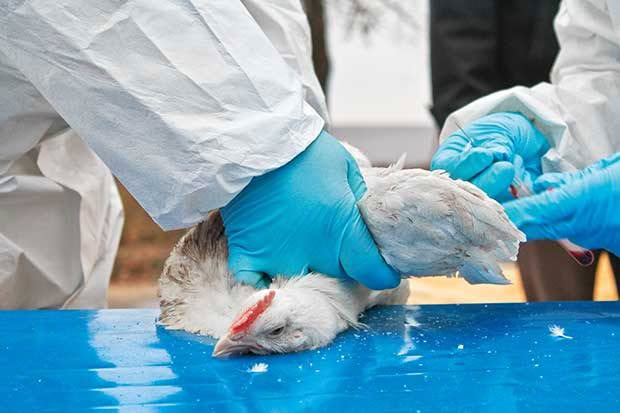
Specialists take blood from a chicken to check if the chicken is infected with avian influenza.
New Zealand’s geographic isolation and tight restrictions on poultry imports give us some protection from avian influenza (bird flu).
However, testing has shown low levels of a strain of avian influenza in wild waterfowl within NZ.
Avian flu would be devastating consequences, especially to our unique native birds, so even the possibility of an outbreak needs to be treated extremely seriously.
A backyard flock is more easily able to mix with wild birds, waterfowl and game birds.
You’re also unlikely to put in place the strict biosecurity measures that occur on commercial farms. That means if there is an outbreak of avian influenza here, it’s very possible it will be first seen in a backyard flock.
The illegal importation of poultry products, fertile eggs or live birds may unwittingly introduce this disease to the ‘fancy breeds’. The people most recently caught at the border with fertile eggs have been small backyard flock owners. They are also more like to go to poultry shows where no birds are ever tested for a range of diseases.
If you live near to areas where seabirds migrate in from overseas or there are waterfowl, be extra vigilant as this is the most likely way avian influenza will arrive here.
Symptoms can include:
◊ sudden and unexplained deaths – an entire flock may die within days
◊ swollen blue comb and wattles
◊ dark red and white spots on the combs and legs
◊ rapid spread of disease throughout the flock
◊ depression and loss of appetite
◊ a drop in egg production
◊ signs of nervousness
You can call MPI’s Emergency Pest & Disease hotline free, 24-7: 0800 80 99 66
Read more:
www.biosecurity.govt.nz/pests/bird-flu
WHY COCCIDIOSIS IS A BIG PROBLEM
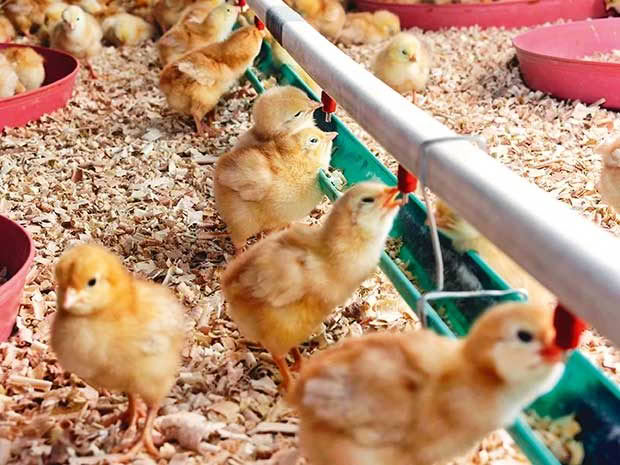
Coccidiosis is a common worldwide disease caused by a gut parasite (coccidia, colloquially known as ‘cocci’, pronounced ‘cocksy’) which can cause severe, often fatal, damage to the gut lining. It is most common in young birds as they have no immunity. However, birds of any age can be affected.
There are many species of coccidia and they tend to be host-specific; the avian and mammalian species do not cross infect. For example, cocci can be a problem in calves which is why many calf meals are medicated in the same way as Chick Starter, but it is a different species of coccidia to those which affect chickens.
Turkeys have a couple of species specific to them as well.
There are at least six species which can cause significant problems in chickens. It is almost impossible to protect birds from becoming infected with coccidiosis, but there are several courses of action you can undertake to minimise loss.
◊ Provide the chick with medicated feed or water, at a level to prevent the coccidia taking a hold so as to cause disease – the treatment level is progressively reduced over a number of weeks to allow slight leakage of infective organisms which trigger the immune response. Some starter feeds contain oregano which helps to protect the gut.
◊ Ensure chicks are getting the full amount of medicated feed per chick. Do not dilute with grain, scraps or free range too soon or the chicks will not get enough medication to cover any breakthrough infection. Most good quality commercial Chick Starter feeds you can buy will contain a low level of coccidiosis medication (this will be noted on the bag). Many also include oregano which has been shown to protect the gut.
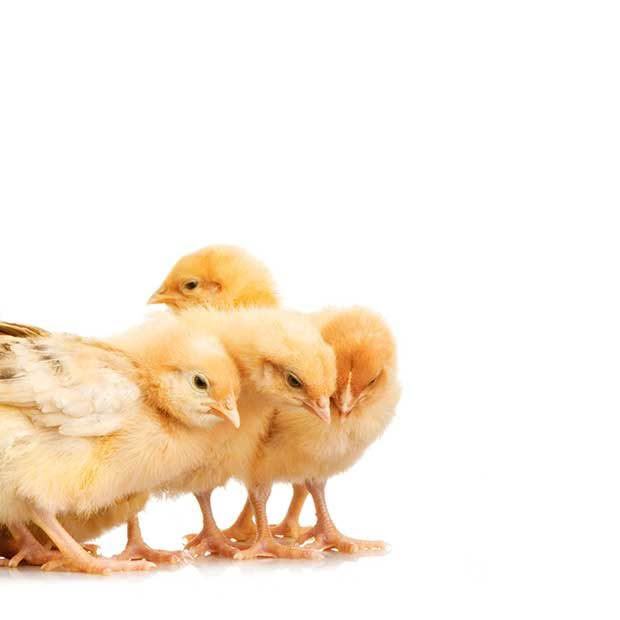
◊ Try to provide conditions which prevent the oocysts (eggs) from developing in the litter. Hot and wet conditions, eg a drinker under a brooder lamp, must be avoided. Raise the drinker up on a solid platform above the litter or sit on a grid which allows the drips to fall on to a floor or tray the chicks cannot reach. Non-spill drinkers or nipples are preferable.
◊ Have a treatment in your first aid kit as an insurance, as at the first sign of cocci the whole flock needs to be treated. You cannot wait half a day to get medication as it can kill very quickly. Coxiprol (available without a prescription) and Baycox (which does need one) are excellent treatments.
◊ Vaccination of the young chick with attenuated (made weaker) strains of several coccidian species triggers an immune response in the bird to the invasion of weakened strains before it might encounter a wild field strain. However, this is an expensive option, and as noted on page 60, you will then have to continue vaccinations forever.
Decades ago, milk was used as a ‘flush’ for young birds suffering from coccidiosis. Scientists have found that it is not a cure, but we do know it can help (but not always!) if you time it perfectly (difficult).
Chickens are lactose-intolerant; when given milk, their kidneys excrete large amounts of fluid, sweeping the gut contents out and causing diarrhoea in the chick which cleans out most of the coccidia before they can embed in the gut wall.
However, this is nowhere near as effective as preventative steps or medications, and getting the timing right is very difficult to do. It’s also potentially harmful to the chick for other reasons (nutrition, hydration).
Chicks do get a certain amount of maternal immunity but this wanes as they reach 2-3 weeks of age.
The lifecycle of the parasite is around 10 days from ingestion to it laying its own eggs, so it is the second life cycle that can cause a huge number of infective eggs to be shed into the litter. That makes the danger period for a chick about weeks 4-6.
If conditions are right (warm, wet, not enough medicated feed) the chicks are bound to come into contact with enough coccidia to cause symptoms and often very quick death.
SIGNS AND SYMPTOMS OF COCCIDIOSIS
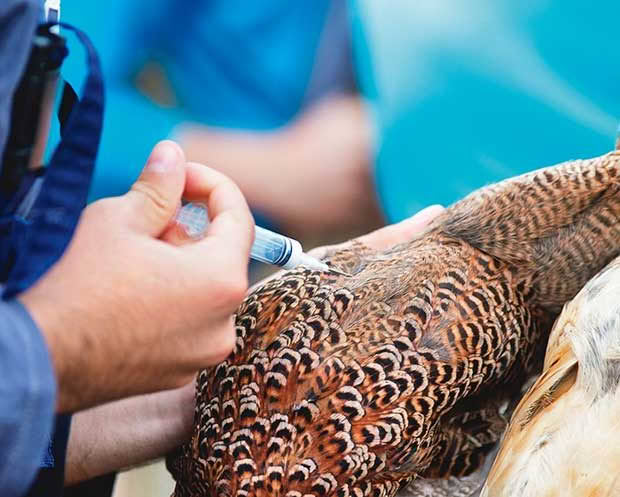
You may spot droppings containing bright red blood, usually caused by Eimeria tenella and this is the symptom most people associate with cocci, but it’s by no means the symptom of all types.
Typically your first clue will be the ‘crook chook’ stance: standing alone, feathers fluffed up, eyes closed, not inclined to eat or drink and the bird will usually also have cold feet.
Once this stage is reached it will have lost weight and is likely to die, although some TLC and individual dosage of medication might pull them through.
The different species can affect different parts of the gut and even at different times of the bird’s life. One species (Eimeria acervulina) can cause a chronic wasting and a white diarrhoea in much older birds. A particularly severe type, Eimeria necatrix, can cause very sudden deaths with few symptoms.
If you are doing a post-mortem, a very swollen gut, often with the appearance of a peppered sausage, would indicate coccidiosis from this species.
WHY RESCUE BIRDS ARE BIG RISK AND HOW TO PREVENT IT
Former cage or ‘rescue’ hens will have never been in contact with their droppings before release and so will have never have had an opportunity to build up immunity to coccidiosis.
On arrival in a coop or run where other adult birds have contaminated the ground, these birds will get a hefty dose; about 2-3 weeks after they arrive they can go down with cocci and often die.
If you are adding rescue hens to your flock, it pays to have a coccidiosis treatment like Coxiprol on hand. Treat them when they arrive (at the prescribed lower level) and then I’d recommend repeating the treatment a couple of times over their first month.
Love this story? Subscribe now!
 This article first appeared in NZ Lifestyle Block Magazine.
This article first appeared in NZ Lifestyle Block Magazine.
